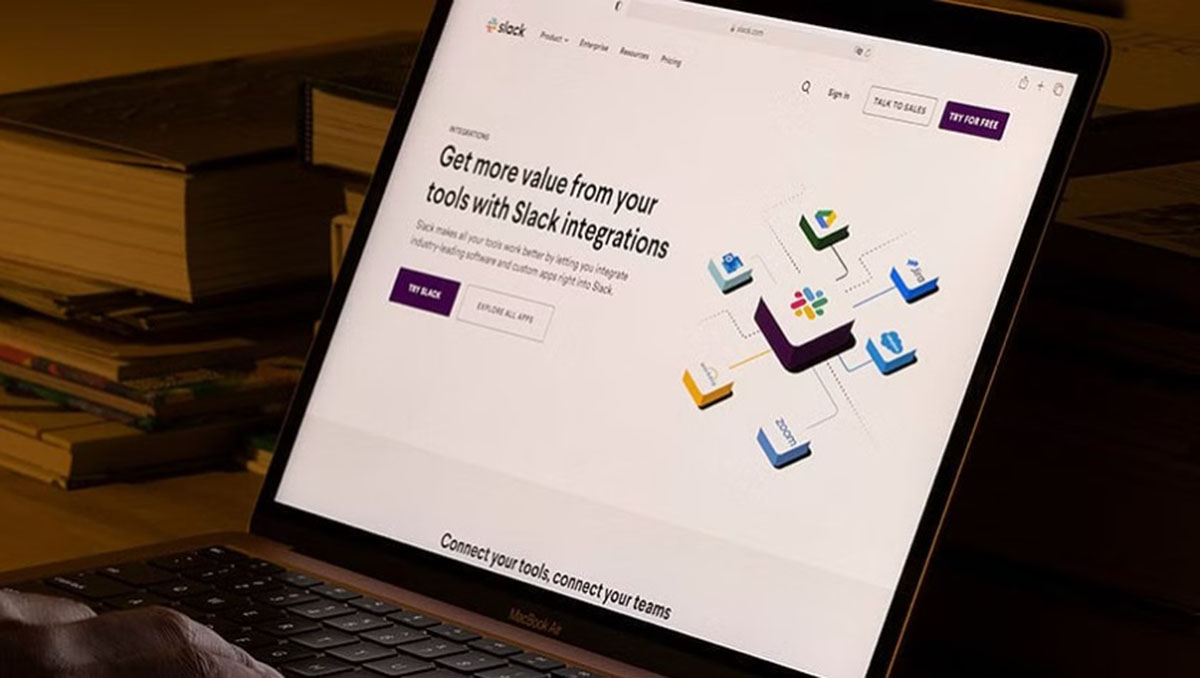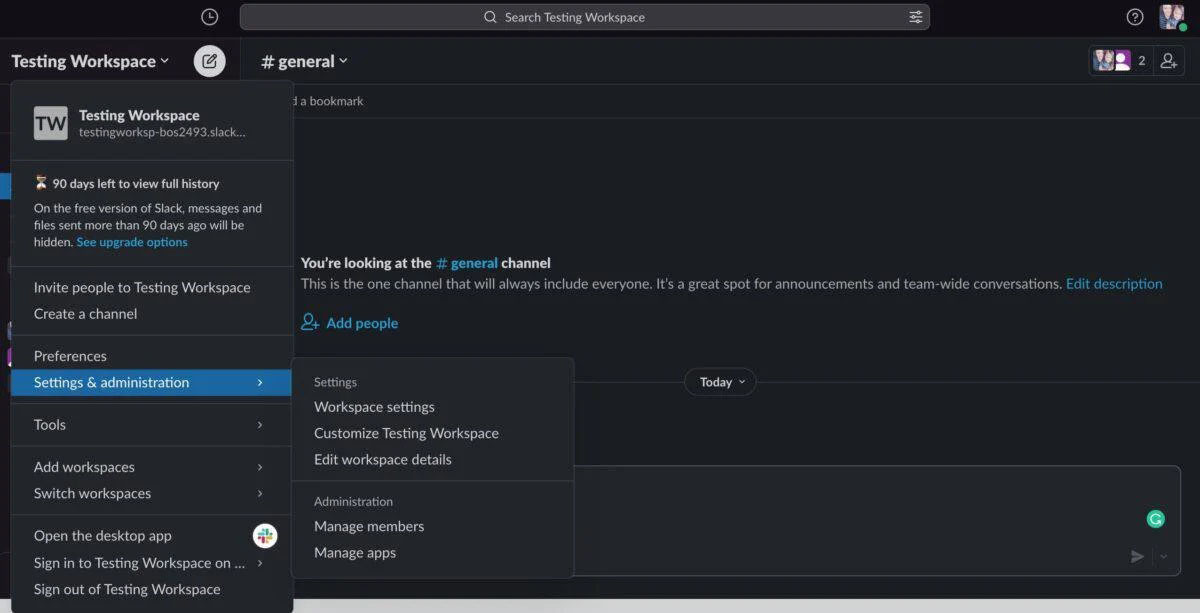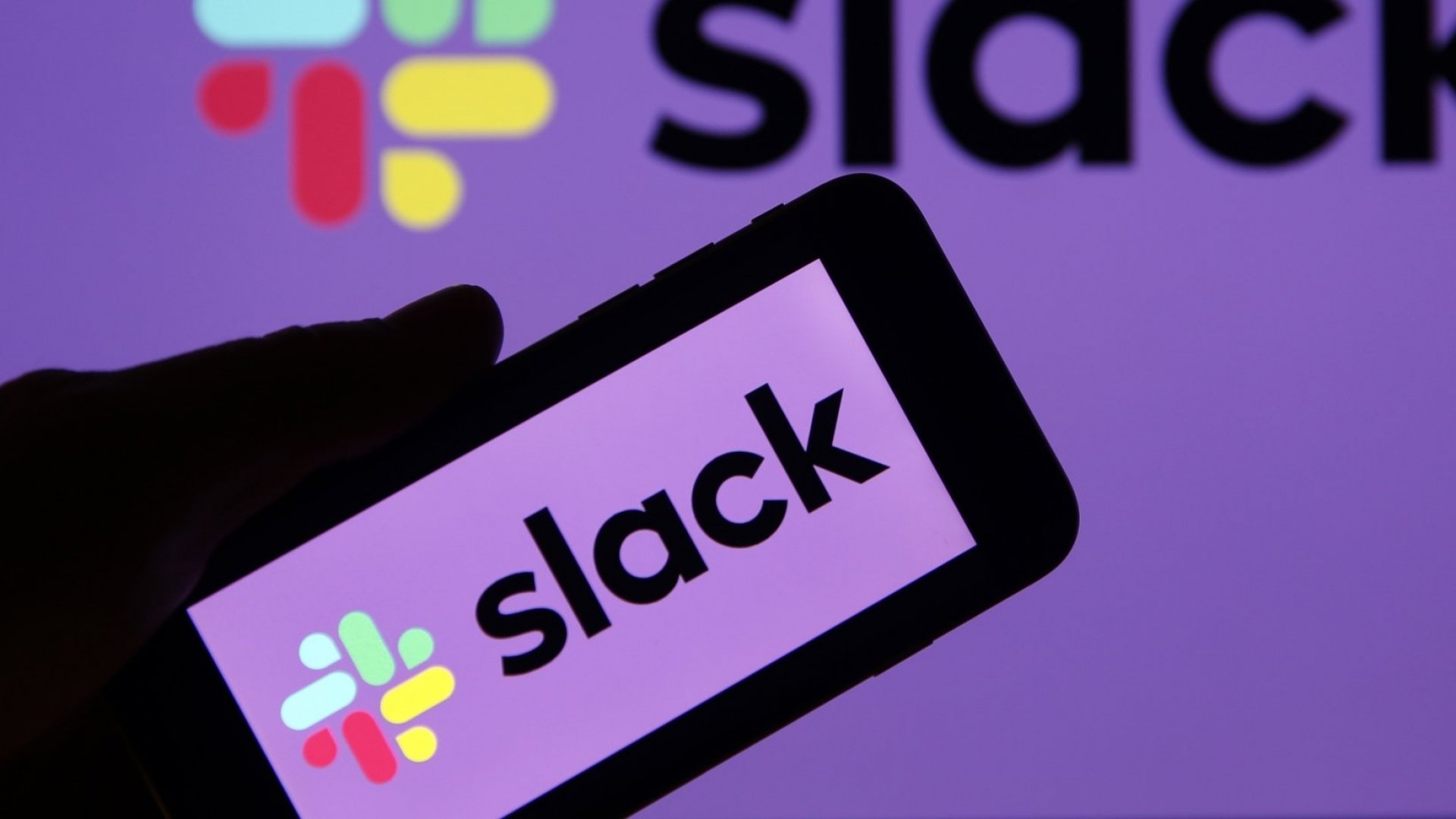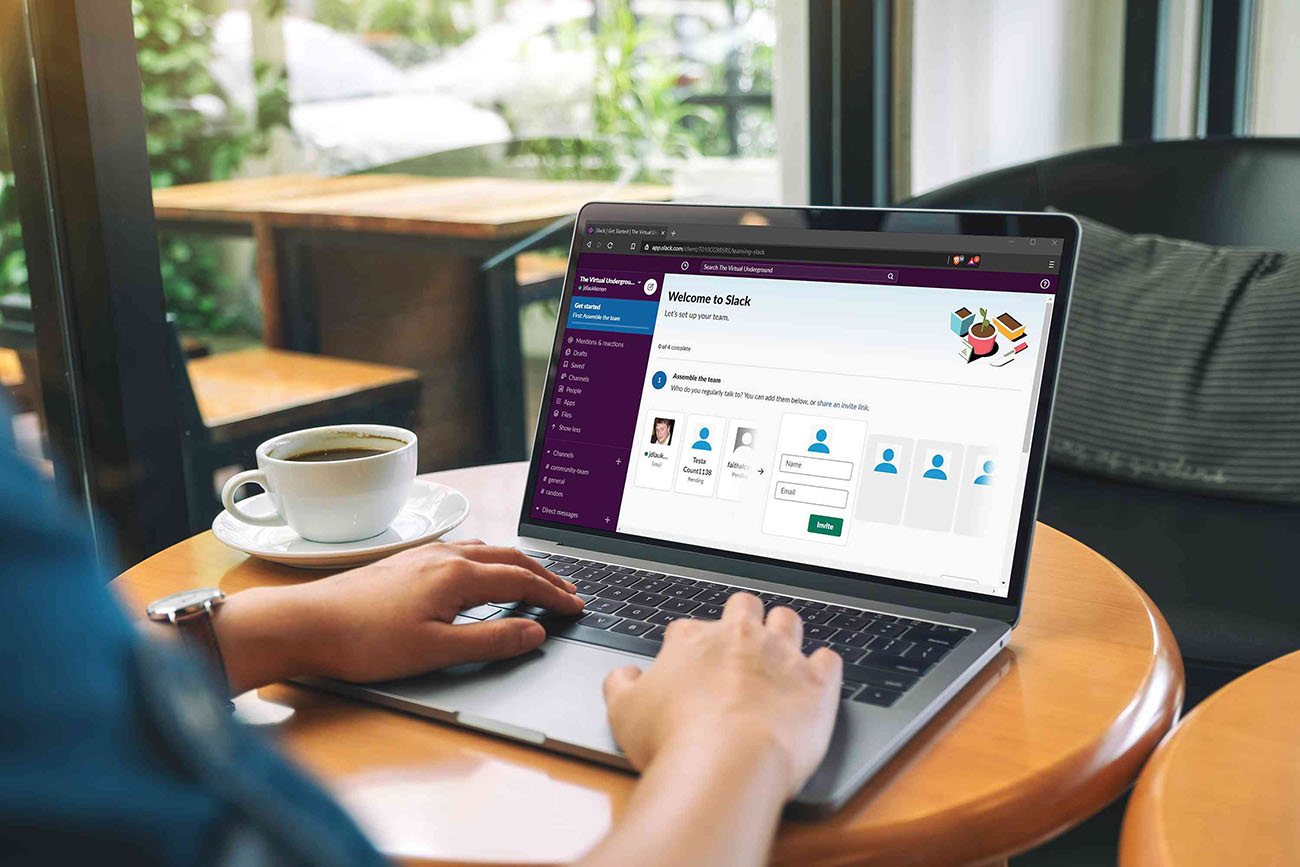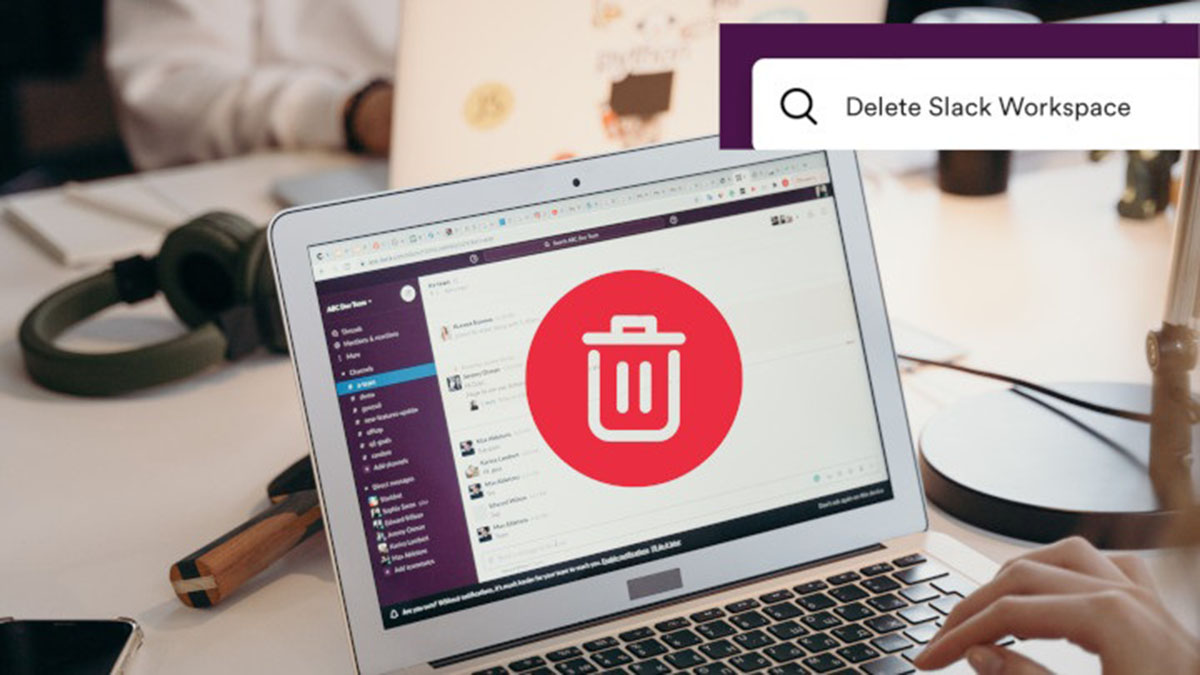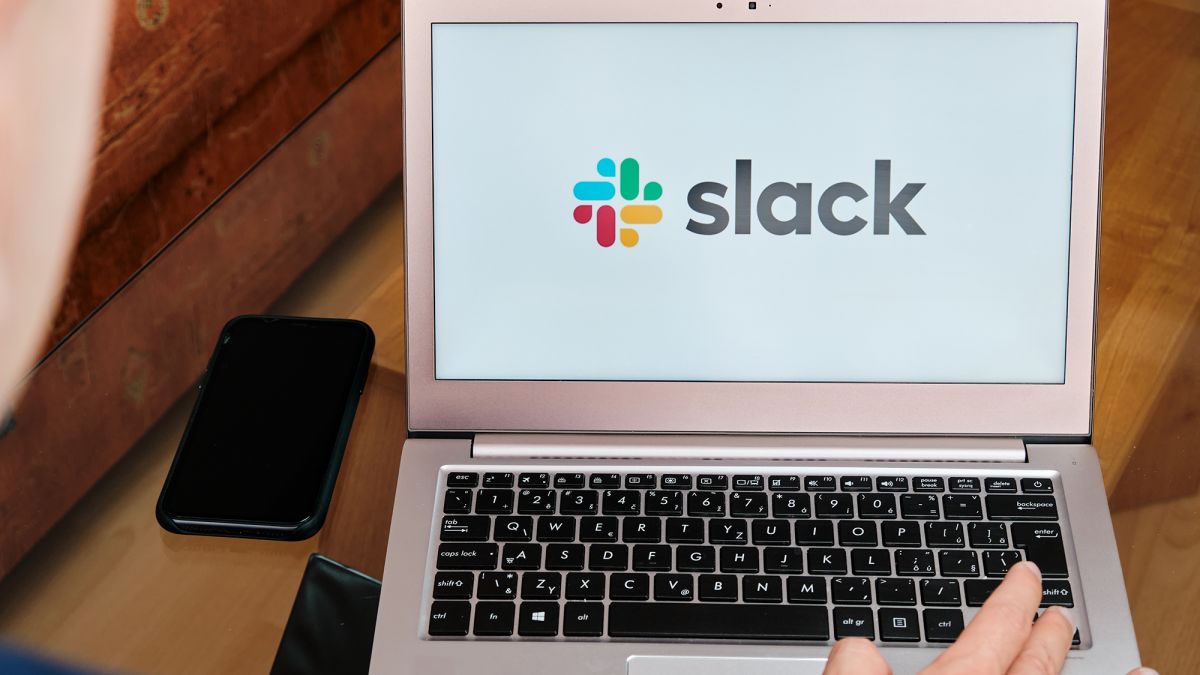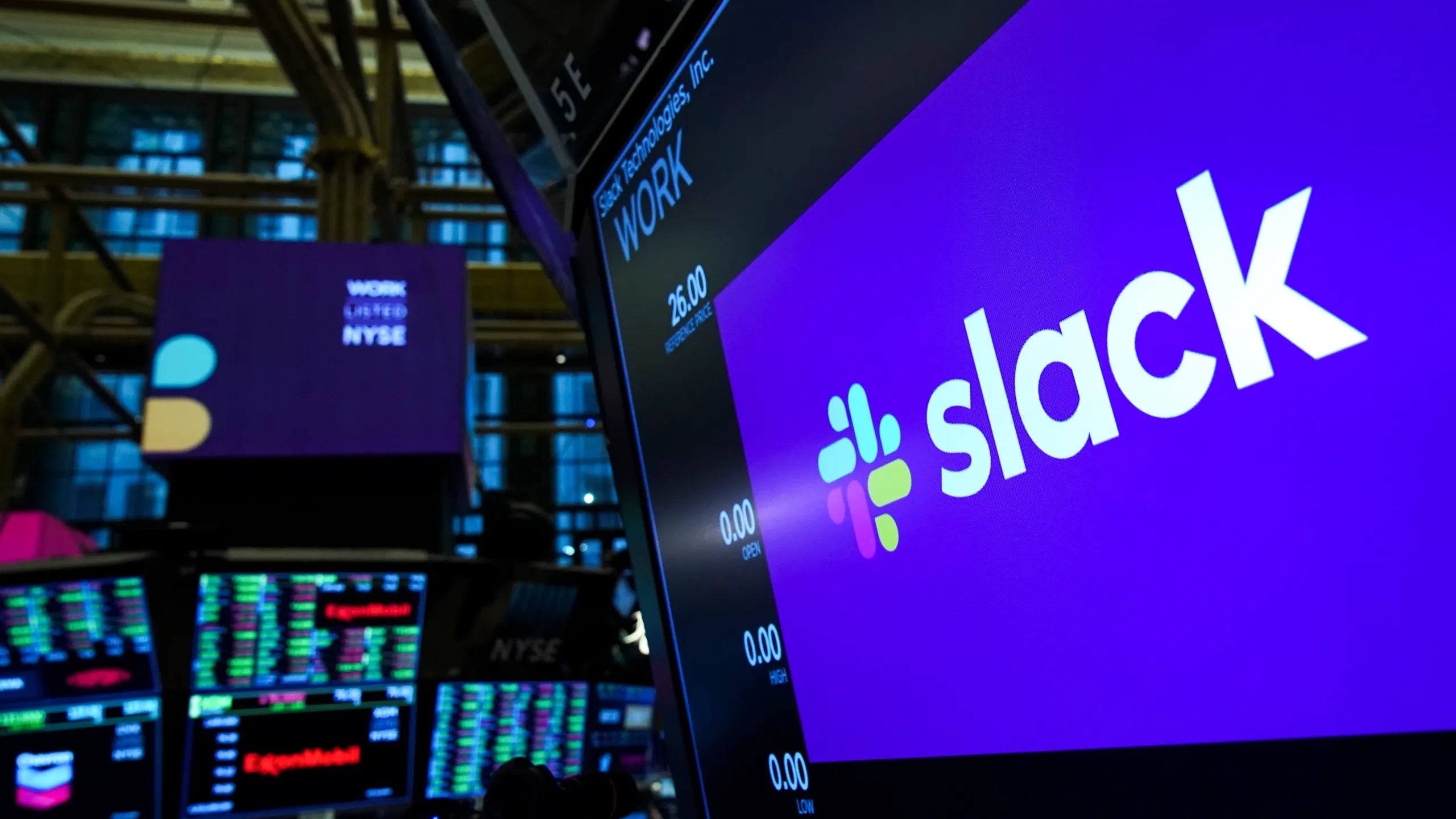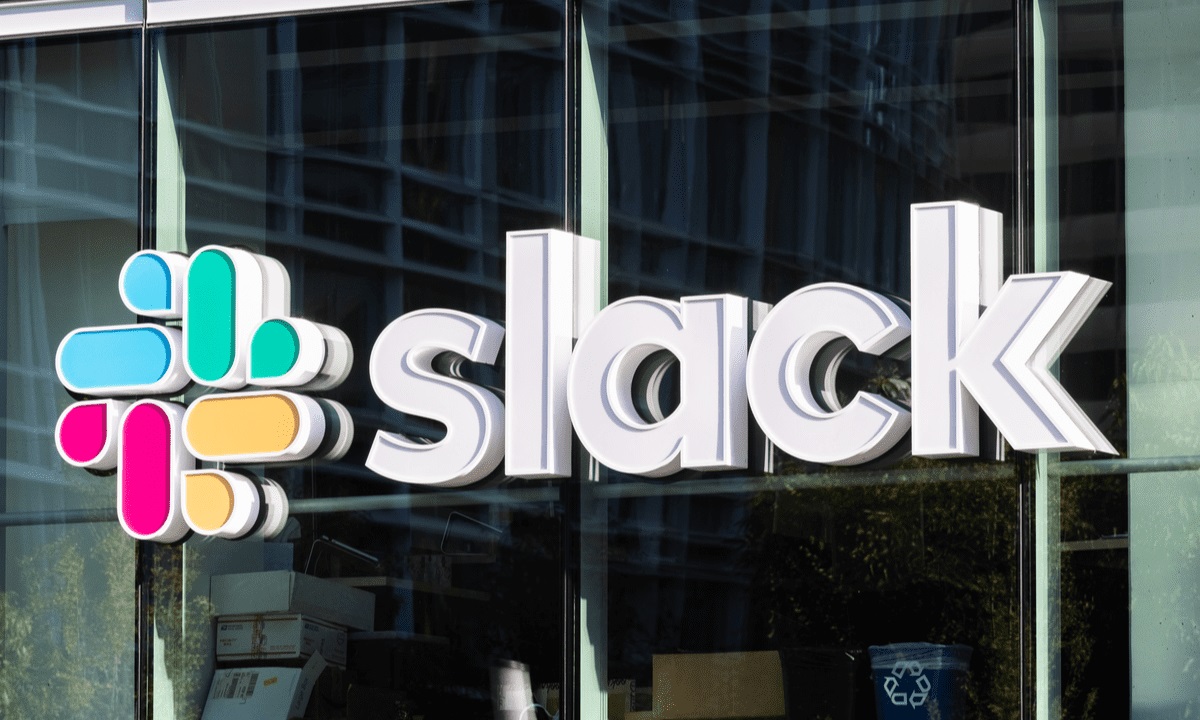Introduction
Slack, a popular team communication and collaboration platform, has gained widespread adoption in the corporate world. As an administrator, it’s essential to understand the level of visibility you have into users’ activities, access controls, and data management. This knowledge allows you to effectively manage the platform, ensure compliance, and address any potential security concerns.
As a Slack admin, it’s important to understand the capabilities and limitations of your role. While you have access to various administrative controls, it’s crucial to strike a balance between managing the platform and respecting user privacy. In this article, we will explore what Slack admins can see, the level of access and permissions they have, and how they can manage user activities and security.
By understanding the features and capabilities available to Slack admins, you can effectively manage your team’s communication while maintaining the necessary security and privacy measures. Let’s delve into the different aspects of admin visibility and control in Slack.
User Activity
As a Slack admin, you have access to valuable insights regarding user activity within the platform. You can monitor various aspects such as user login history, active users, and overall engagement. This information allows you to track user participation and identify highly active or inactive members.
Furthermore, you can also view details about user status, including whether they are online, idle, or offline. This feature enables you to assess the availability of team members and identify potential bottlenecks or communication gaps.
Additionally, Slack provides admins with the ability to view individual and team-level message statistics. You can see the number of messages sent by each user, as well as the most active channels and discussions. This data provides valuable insights into communication patterns, collaboration trends, and user engagement levels.
It’s important to note that while you have access to this information, it’s essential to respect user privacy and maintain a culture of trust within the organization. Monitoring user activity should be done with the intention of enhancing communication and collaboration, rather than invading privacy.
Administrators should use this information to identify areas where additional support or training may be needed, fostering a more productive and engaged team.
Access and Permissions
One of the key responsibilities of a Slack admin is managing access and permissions within the platform. You have the ability to control who can join your organization’s workspace, invite new members, and remove users when necessary.
Slack provides a range of permission levels to grant different levels of access to users. As an admin, you have the highest level of access, granting you full control over the workspace settings and configurations. You can also assign different roles to team members, such as giving certain individuals the ability to manage channels or invite new members.
Furthermore, as a Slack admin, you can create and manage user groups. User groups allow you to easily define sets of permissions and assign them to multiple users simultaneously. This feature streamlines the process of granting access to specific channels, files, or apps, ensuring that the right people have the appropriate level of access.
In addition to managing user access, Slack admins also have the ability to control third-party integrations and apps. You can review and approve or restrict the installation of third-party apps, maintaining control over what tools and services are used within the workspace. This helps to ensure data security and prevents unauthorized access to sensitive information.
It’s important to regularly review and update access permissions to align with changing team dynamics and organizational needs. By proactively managing access and permissions, you can maintain a secure and efficient workspace in Slack.
Messages and Channels
As a Slack admin, you have visibility into the messages and channels within your workspace. This allows you to monitor communication, ensure compliance with company policies, and address any inappropriate behavior or violations.
You can view the content of public channels and any private channels that you are a member of. This allows you to stay informed about ongoing discussions, collaborate with team members, and provide guidance or support when needed. As an admin, you also have the ability to create and manage channels, allowing you to organize conversations and facilitate efficient communication within the team.
While you can access messages and channel content, it’s important to respect user privacy and maintain confidentiality. Avoid unnecessarily monitoring private conversations or accessing sensitive information without valid reasons. It’s crucial to establish trust among team members and create a safe space for open communication.
Slack also provides features to help manage and moderate conversations. As an admin, you can set up automated compliance tools to flag and notify you of any inappropriate language or behavior. This helps in maintaining a professional and respectful environment for all users.
Furthermore, as an admin, you have the ability to delete messages or files that violate company policies or legal requirements. This ensures that any inappropriate content can be promptly removed, maintaining a productive and inclusive workspace.
It’s important to communicate the guidelines and expectations for appropriate use of Slack to all team members. By setting clear guidelines and expectations, you can foster a positive and collaborative environment within the platform.
File Sharing and Storage
Slack provides a convenient platform for sharing files and documents within a team. As a Slack admin, you have insight into the files that have been shared across the workspace, allowing you to monitor and manage the storage of these files.
Users can share files in Slack through direct messages, channels, or by uploading them directly to the platform. This includes a wide range of file types, such as documents, images, videos, and more. As an admin, you can view file details, including the name, size, and the user who uploaded it.
When it comes to file storage, Slack has limitations based on the workspace plan. Each workspace has a set storage limit, and files that exceed this limit may need to be removed or migrated to external storage solutions. As an admin, you can monitor the storage usage, identify large files or unnecessary duplicates, and communicate with the team to ensure efficient use of storage resources.
Additionally, as a Slack admin, you have the ability to set organization-wide file retention policies. This allows you to define rules for how long files are stored within the platform. By implementing such policies, you can ensure compliance with data retention regulations and manage the overall storage capacity of Slack.
It’s important to educate users on file management best practices, such as regularly reviewing and deleting unnecessary files, organizing files into relevant channels or folders, and properly naming files for easy search and retrieval. By providing guidelines and training, you can encourage efficient file sharing and storage practices within the team.
Remember to regularly assess and optimize file storage to ensure that your workspace operates smoothly and efficiently.
Third-Party Apps and Integrations
Slack offers a wide range of third-party apps and integrations that allow users to extend the functionality of the platform. As a Slack admin, you have control over which apps can be installed within your workspace, ensuring that only trusted and relevant apps are used.
Admins have the ability to review and approve or restrict the installation of third-party apps. This ensures the security and integrity of the workspace by preventing unauthorized access to sensitive information. By carefully curating the available apps and integrations, you can maintain a streamlined and secure environment for your team.
Slack integrates with various tools and services that teams use on a daily basis, including project management tools, customer relationship management systems, file storage platforms, and more. These integrations enhance productivity and collaboration by allowing users to access and interact with external services directly within Slack.
As an admin, you can monitor the usage of third-party apps within your workspace. This includes viewing installed apps, their permissions, and the users who have authorized access. This visibility allows you to manage the apps effectively, ensure compliance with data privacy regulations, and address any potential security concerns.
Regularly reviewing and auditing the third-party apps and integrations used within your workspace is crucial to maintaining data security. You should regularly assess the relevance and effectiveness of the installed apps, removing any unused or unnecessary integrations. This helps to maintain a clean and efficient system and prevents potential security risks.
It’s also important to educate users about the appropriate use of third-party apps. Provide guidelines and best practices to ensure that users select and configure apps in a secure manner. This helps to promote a culture of data security and responsible app usage within your team.
By carefully managing third-party apps and integrations, you can enhance collaboration, improve productivity, and maintain a secure workspace within Slack.
Compliance and Security
Compliance and security are critical considerations for any organization using Slack. As a Slack admin, you play a crucial role in ensuring that the platform meets the necessary standards and safeguards data privacy.
Slack offers various security features to protect your workspace. This includes data encryption both in transit and at rest, two-factor authentication, and controls to manage user access. As an admin, you have the ability to enforce strong password policies and enable features like single sign-on (SSO) for enhanced security.
Furthermore, Slack provides compliance certifications and features to help organizations meet regulatory requirements. These include HIPAA, GDPR, and SOC 2 compliance, as well as compliance exports for message and file retention. As an admin, you can configure these settings to align with your organization’s compliance needs.
As part of your role, you should also regularly review and update security settings and practices. This includes monitoring user access, ensuring proper permissions and roles are assigned, and staying informed about any security alerts or updates from Slack.
It’s important to educate and train your team on security best practices. This includes guidelines for secure password management, avoiding suspicious links or files, and reporting any potential security threats or incidents promptly. By fostering a culture of security awareness, you can mitigate the risk of data breaches and unauthorized access.
In addition to ensuring security, it’s essential to educate users about data privacy. Slack provides granular controls for managing user data, giving you the ability to define retention policies and protect sensitive information. As an admin, you should regularly review and update these policies, ensuring that data is stored and managed in compliance with privacy regulations.
Compliance and security are ongoing processes, requiring active monitoring and continuous improvement. Stay informed about Slack’s updates and security features, and collaborate with your organization’s IT and legal teams to ensure compliance with applicable regulations.
Data Retention and Privacy
Data retention and privacy are crucial aspects to consider when managing a Slack workspace. As a Slack admin, it’s important to understand the platform’s data retention policies and privacy features to ensure compliance and protect sensitive information.
Slack provides controls that allow you to define and manage data retention within your workspace. You can set policies for how long messages and files are retained, ensuring that data is retained for the necessary duration and no longer. By defining data retention policies, you can adhere to legal requirements and minimize the risk of storing unnecessary data.
As an admin, you also have the ability to export message and file data, which can be useful for compliance purposes or data analysis. It’s important to handle exported data securely and ensure that it is used appropriately and in compliance with privacy regulations.
Slack places a strong emphasis on user privacy. As an admin, it’s essential to respect user privacy and maintain confidentiality. Avoid unnecessarily accessing or monitoring private conversations or files without valid reasons, and communicate to your team about the importance of privacy within the platform.
Slack provides features and controls to protect user privacy. For example, users have the ability to delete their messages and files, giving them control over their own data. Additionally, Slack encrypts data both in transit and at rest, providing an additional layer of security for user information.
It’s important to regularly review and update data retention and privacy settings to ensure they align with your organization’s policies and legal obligations. Consult with your legal and IT teams to assess any changes in data retention regulations and adjust your settings accordingly.
When it comes to compliance with privacy regulations, such as GDPR, it’s crucial to understand the responsibilities of both Slack and your organization. Familiarize yourself with Slack’s data protection commitments and consult with legal experts to ensure your usage of the platform aligns with applicable privacy laws.
By being proactive in managing data retention and respecting user privacy, you can create a secure and trusted environment within your Slack workspace.
Conclusion
As a Slack admin, you have a vital role in managing the platform, ensuring compliance, and promoting a secure and productive environment for your team. By understanding what Slack admins can see and the level of visibility and control they have, you can effectively manage user activities, access permissions, and data within the workspace.
Throughout this article, we have explored various aspects of Slack admin capabilities, including user activity monitoring, access and permissions management, message and channel visibility, file sharing and storage, third-party apps and integrations, compliance, and security, as well as data retention and privacy.
As you navigate your role as a Slack admin, it’s important to find the right balance between enforcing necessary controls and respecting user privacy. Communication, education, and trust-building are essential in creating an inclusive and productive workspace.
Regularly review and update your settings and practices, staying informed about Slack’s updates and security features. Collaborate with your organization’s IT and legal teams to ensure compliance with applicable regulations and maintain data privacy.
By effectively managing your Slack workspace, you can foster a collaborative and secure environment that enhances communication, promotes productivity, and protects sensitive information.









